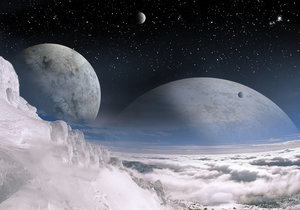9437861
Edexcel Biology Topic 1 and 2 AS
Description
No tags specified
Resource summary
| Question | Answer |
| Monosaccharides. | Monosaccharides are single sugar units. Monosaccharides have between three and seven carbon atoms. |
| Disaccharides | Disaccharides are two single sugar units joined together in a condensation reaction which produces water. They are joined together by a glycosidic bond. |
| Polysaccharides | Polysaccharides are three or more sugar units joined together from a condensation reaction. They are good for storing energy because they are long chains and can be compact. They do not dissolve easily. |
| Starch | Starch is made up of two molecules, amylose and amylopectin. Amylose is a straight chain and amylopectin is a branched molecule. The compact, spiral structure of starch makes it an excellent storage molecule as it is also insoluble. |
| Lipids | Lipids are organic molecules found in every type of cell. They are insoluble in water but soluble in organic solvents such as ethanol. The most common lipids that we eat are called Triglycerides. |
| Triglycerides | Triglycerides are used as energy stores in plants and animals. They are made up of three fatty acids and one glycerol molecule linked by a condensation reaction. The bond that forms the triglyceride is called an ester bond. |
| Saturated Fats | Saturated fats are when the fatty acid chains in lipids contain the maximum number of hydrogen atoms. Meaning that it does not contain a double bond. In a saturated fatty acid, the chain is long and straight. This means they can pack together closely. These fats are usually solid at room temperature. |
| Unsaturated Fats | Unsaturated fats have one double bond between two carbon atoms in each fatty acid chain. A double bond in the chain causes it to kink. These kinks stop the unsaturated hydrocarbon from packing tightly together and therefore results in fats that are liquid at room temperature. |
| Blood Clotting | Platelets stick to the damaged wall of the blood vessel. Thromboplastin is released from the tissue and from the platelets. Ca2+ and Vitamin K are in the plasma. Platelets stick to the damaged tissue in the wall and to each other, forming a plug. Fibrin mesh traps blood cells, forming a clot. |
| More on Blood Clotting | Cell fragments called platelets stick to the wall of the damaged blood vessel forming a plug. A series of chemical changes occur in the blood resulting in prothrombrin being converted into thrombrin. Thrombrin is an enzyme that catalyses the coversion of soluble fibrin to long insoluble strands of fibrin which forms the mesh, trapping red blood cells and platelets which then forms a clot. |
| Globular Proteins | In globular proteins the polypeptide cain is folded into a compact spherical shape. these proteins are soluble due to the hydrophilic side chains that project from the outside of the molecules and are important in metabolic reactions. Enzymes are globular proteins and their three dimensional shape is crucial in forming enzyme-substrate complexes. |
| Fibrous Proteins | Fibrous proteins do not fold up into a ball shape but stay as long chains. Some polypeptide chains can be cross-linked for additional strength. These insoluble proteins are important structural molecules. Some examples are: Keratin and collagen. |
| Diffusion | Diffusion is the net movement of molecules or ions from a region of high to low concentration. This will happen until equilibrium, when the substance is evenly spread out throughout the whole volume. Smaller molecules will diffuse more rapidly compared to bigger molecules. |
| Facilitated Diffusion | Some larger molecules and ions that are hydrophilic cannot diffuse through the bilayer of the cell membrane. The hydrophobic tails of the phospholipids provide an impenetrable barrier. So these larger molecules are aided by proteins in a process called facilitated diffusion. They may diffuse through water filled pores within the channel proteins scattered across the cell membrane. |
| Osmosis | Osmosis is the net movement of water molecules from a solution of low concentration to a solution of higher concentration through a partially permeable membrane. |
Want to create your own Flashcards for free with GoConqr? Learn more.

